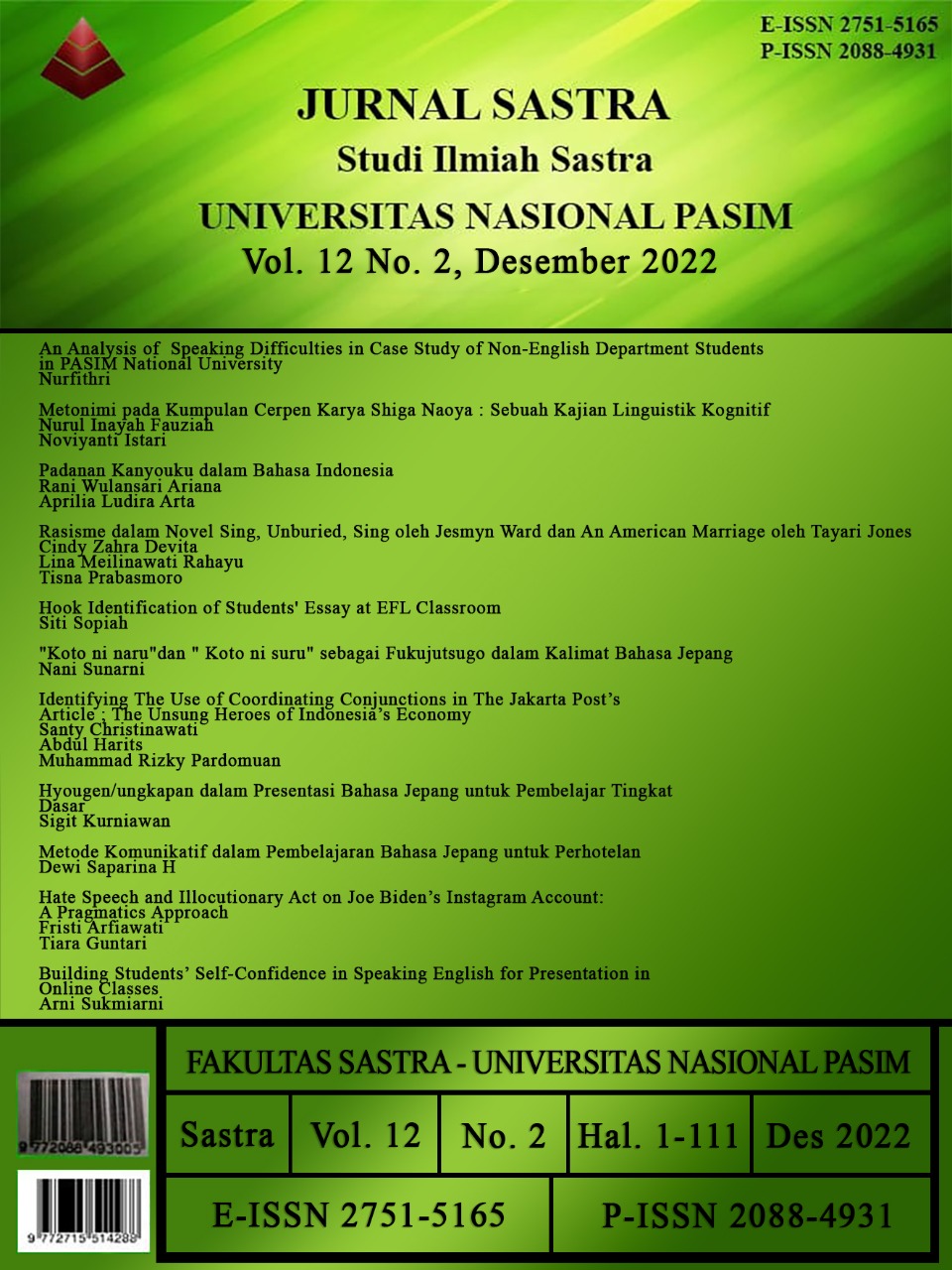a, an, the AN ANALYSIS OF SPEAKING DIFFICULTIES IN CASE STUDY OF NON-ENGLISH DEPARTMENT STUDENTS IN PASIM NATIONAL UNIVERSITY
AN ANALYSIS OF SPEAKING DIFFICULTIES IN CASE STUDY OF NON-ENGLISH DEPARTMENT STUDENTS IN PASIM NATIONAL UNIVERSITY
Abstract
This research entitled An Analysis of Speaking Difficulties In Case Study Of Non-English Department Students In Pasim National University aims to identify the problems faced by non-English Department students in speaking activity. This is the case study of classroom, so that the researcher uses the theory for scoring the speaking activity. The theory for scoring used is by Brown (2004). While the theory for identifying problems of speaking activity is by Penny Ur (1996). Those theories become the main theory in this research. This research was conducted by qualitative descriptive method to identify and describe. The result shows that from four problems, the students face only two problems in speaking class activity. They are inhibition and mother tongue use. In inhibition, they have actually many things to say when talking about a theme in the class. But for speaking in fully English, they are inhibited. This problem is the highest problem faced by students. It reaches 67 %. Then, another problem is mother tongue use. The problem of mother tongue use reached 33% of students’ problem. It is in correlation to the first problem about inhibition. That inhibition is part of causes the mother tongue use. Students are more confident to say and talk something in the mother tongue language. Some of them are confident to talk in Indonesian Language, and some other students are confident to talk in Sundanese Language. Based on test of speaking English scoring scale (Brown; 2004). There are six categories to be scoring in English Speaking. In the Grammar category, the highest percentage of students’ score are 76% are in score 2. In the Vocabulary category, 83% from students is in score 2. In the pronunciation category, the highest percentage of score is in score 1 which reaches 90%. In the Fluency category, the highest percentage of score is in score 2 which reaches 65%. In the Comprehension category, the highest percentage of score is in score 1 which reaches 79%. In the Tasks category, the highest percentage of score is in score 1 which reaches 56%.
References
Brown, H. Douglas. 2004. Language Assessment: Principles and Classroom Practices.San Fransisco State University.
Brown. G and G. Yule. 1983. Teaching the Spoken Language; An Approach Based on the Analysis of Conversational English. Cambridge: Cambridge University Press.
Harris, David. 1974. Testing English as a Second Language. New York: Mc. Graw. Hill Book Company
Pollard, Andrew.2008. Reflective Teaching 3 rd Edition: Evidence Informed Professional Practice. Continuum International Publishing Group.
Vanderkevent.1990. Teaching Speaking and Component of Speaking. New York: Cambridge University Press.
Copyright (c) 2022 nurfithri nurfithri (Author)

This work is licensed under a Creative Commons Attribution 4.0 International License.





